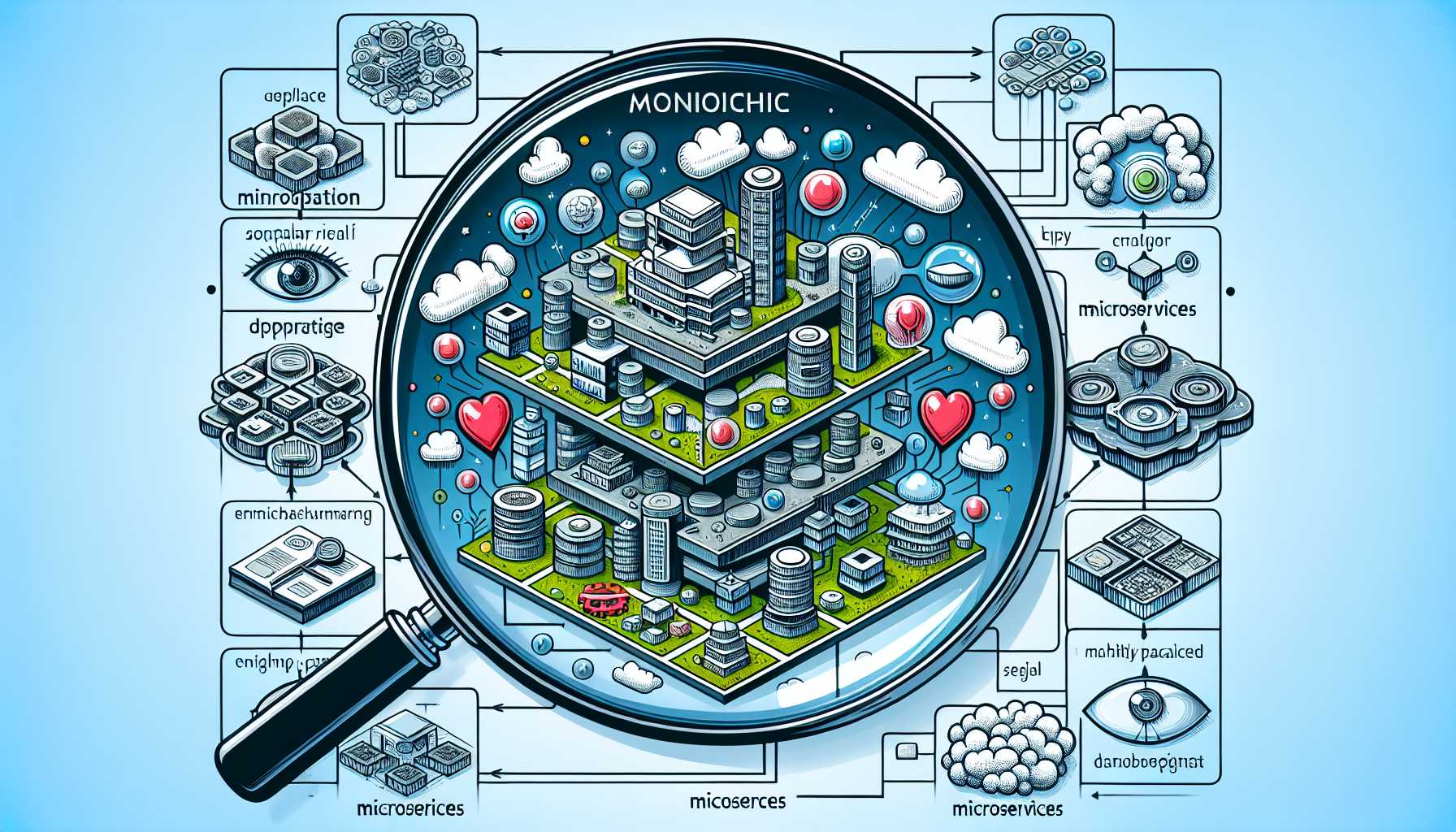Welcome back to our blog, where we delve deep into the intricacies of product management, especially in the tech industry. Today, we’re wrestling with a perennial choice that confronts almost every product leader at some point in their career: should you go for a monolithic architecture or adopt a microservices approach for your new software project?
As a seasoned product manager, I’ve faced this decision multiple times, and I’ve learned that there’s more at stake than just technical preferences. Let’s explore the critical considerations that should guide this pivotal decision. Strap in – this is a topic close to my heart, informed by triumphs and trials alike.

Understanding Monolithic and Microservices Architectures
Before we dive into the considerations, let’s ensure we’re all on the same page about what these terms mean. A monolithic architecture is a traditional unified model for design wherein all the software components are interconnected and interdependent. On the other hand, a microservices architecture consists of a collection of small, autonomous services. Each service in a microservices architecture is self-contained and implements a single business capability.
Consideration #1: Team Structure and Expertise
One of my earliest lessons came when our organization decided to transition from a monolithic system to microservices. Our team structure wasn’t ready for it. Microservices demand a high level of sophistication from your development teams because they need to manage multiple mini-projects simultaneously.
Learning: Ensure your teams are composed of generalist engineers who can handle the increased complexity and cross-functional requirements of microservices. If your organization runs on specialized roles that fit better within a traditional development workflow, start by encouraging cross-functionality before making the big jump.
Consideration #2: Project Scale and Complexity
It isn’t just the size of your team that matters, but the projected scale and complexity of your product. In my experience with startups, a monolithic architecture at the onset can simplify development and scale with the business initially. However, as I spearheaded a product for a large enterprise with complex needs and scalability demands, microservices were the clear winner, providing the necessary agility.
Learning: Evaluate your project’s size and complexity. For simpler or medium-sized applications, monoliths can be more efficient. However, anticipate future scaling needs and consider whether starting with a monolithic approach could lead to painful refactoring down the line.
Consideration #3: Development and Deployment Speed
Microservices tout the benefit of enabling rapid and independent deployment of services. In contrast with my time managing a monolithic app, where each new update required redeploying the entire application, microservices allowed for targeted deployments. However, this wouldn’t have been feasible without a mature CI/CD pipeline. Thus, the existing infrastructure is a critical determinant.
Learning: If your existing infrastructure doesn’t support rapid deployment and scaling, and if you can’t invest in this immediately, a monolithic approach might be the pragmatic choice.
Consideration #4: Long-term Product Vision
In one project, we opted for a monolithic architecture due to tight deadlines and budget constraints, only to find ourselves struggling to pivot when the market environment changed. Microservices would have offered the flexibility we needed to adapt more quickly.
Learning: Always align the architecture choice with your long-term product vision. If you foresee the need to pivot rapidly or decompose the product into separate pieces, microservices might be the way to go.
Consideration #5: Operational Complexity
The operational load of managing multiple services, each with its dependencies, configurations, and potential points of failure, is non-trivial. I remember one instance when a microservices project had everyone on their toes due to a cascade of failing services. Those were long nights.
Learning: Microservices increase operational complexity. Before choosing them, ensure you have the right tools and processes for monitoring, logging, and tracing distributed systems, or be prepared to face the chaos.
Conclusion
Choosing between a monolithic and microservices architecture is a nuanced decision that impacts not only your product’s technical roadmap but also your team’s structure, your company’s operational maturity, and your long-term product vision. Through my experiences, I’ve distilled the importance of considering team expertise, project scale, development speed, future vision, and the readiness to manage operational complexity.
There’s no one-size-fits-all answer, but with these considerations, I hope you’ll feel better equipped to make the right decision for your context. Remember, architecture is like the foundation of a building—it determines how high and how well you can build. Choose wisely.
Thanks for joining me on this exploration. Stay tuned for more deep dives into product management. Until next time, keep architecting greatness!
